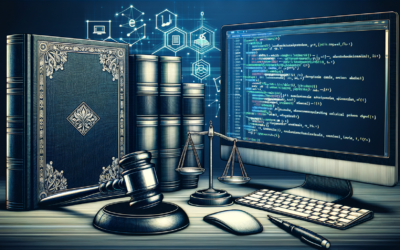Electronic Signature<\h1>
With the advent of digital technology, the electronic signature has become an indispensable tool for dematerialized transactions. In this article, we take a look at the ins and outs of this technology, which is revolutionizing the way documents are exchanged and validated.
What is an electronic signature?
The electronic signature, which is legally recognized in the same way as its handwritten counterpart, is a method of guaranteeing the integrity of a digital document and confirming the agreement of its signatory. It plays a key role in legal, financial, administrative and other areas, offering considerable security and ease of use.
Why is it so reliable?
The process relies on advanced cryptographic mechanisms to ensure the authenticity and non-repudiation of documents. Digital certificates, issued by recognized certification authorities, are used to validate the identity of stakeholders.
Types of electronic signatures
There are different levels of electronic signature – simple, advanced and qualified – each offering a specific degree of security adapted to the nature of the transaction. Qualified electronic signatures, for example, are considered the most secure and the most difficult to revoke.
Current legislation
Legislation governing electronic signatures differs from country to country, but within the European Union, the eIDAS regulation plays a central role in ensuring the mutual recognition of electronic signatures between member states.
Practical applications of electronic signatures
From contract lifecycle management to the finalization of real estate transactions, electronic signatures can be integrated into a multitude of processes. It’s also an invaluable asset for premium legal software, which benefits from increased efficiency thanks to this technology.
Benefits of electronic signatures
It saves considerable time, eliminating the need to print, send and physically store documents. This efficiency gain is complemented by a reduction in the costs associated with document management.
Electronic signature security
Based on robust security protocols, electronic signatures minimize the risk of document fraud. Ediscovery and automated due diligence tools can be used in conjunction with electronic signatures to reinforce the compliance and auditability of electronically signed documents.
Integration into professional workflows
Integrating electronic signatures into management solutions such as legal project management or governance, risk and compliance (GRC) platforms simplifies validation and authorization processes, making the whole project management process much smoother.
Implementation steps
Setting up an electronic signature solution within an organization requires a study phase to select the most suitable type of signature, followed by implementation of the technology across the various IT systems.
Electronic signatures and the RGPD
In the European context, RGPD compliance is essential. Electronic signatures must therefore be implemented with guarantees of personal data protection, an aspect covered by solutions such as RGPD compliance.
Frequently asked questions
Here is a list of frequently asked questions about electronic signatures.
Is the electronic signature legally valid?
Yes, it is legally recognized in many countries and territories, provided it meets the criteria defined by local or international regulations.
Can an electronic signature be forged?
Although the risks of forgery are considerably reduced thanks to cryptographic techniques, vigilance remains essential, and we recommend using a trusted service provider.
What’s the difference between a simple and a qualified electronic signature?
The simple electronic signature offers a basic level of security, while the qualified electronic signature provides additional guarantees as to the identity of the signatory and the integrity of the document, making the process as reliable as a handwritten signature.
In conclusion, the electronic signature remains an essential cornerstone of digital transformation, for both individuals and businesses. Its use is part of an eco-responsible, operationally efficient approach that complies with legal requirements. It is a symbol of innovation, constantly evolving towards an ever more connected and secure future.




